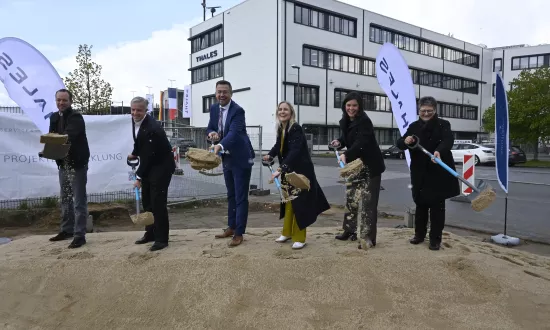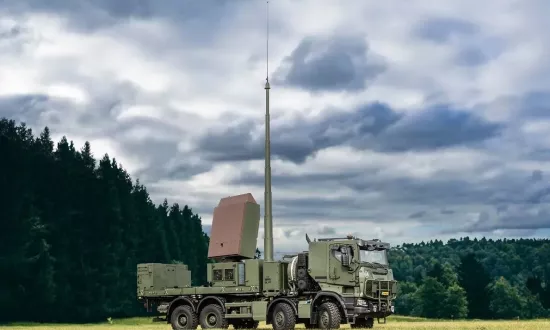Thales’s Training and Simulation team in the UK awarded Queen's Commendation for forty years of providing training for RAF Tornado fast jet pilots
Thales’s services to the Royal Air Force, delivered by the ACE Training and Simulation team, have been recognised in the 2019 Queen’s Birthday Honours list. The commendation was awarded in ‘recognition of exceptional qualities and personal sacrifices in the service of others,’ after forty years of providing training for Tornado fast jet pilots and crew.
“I’m delighted that our hard-working ACE team has received this recognition,” said Thales’s Head of Military Training in the UK David Bolsover, a veteran RAF pilot. “The team has worked really hard to give the RAF some of the best aviators in the world – people who we all depend upon to protect our national interests and international obligations.”
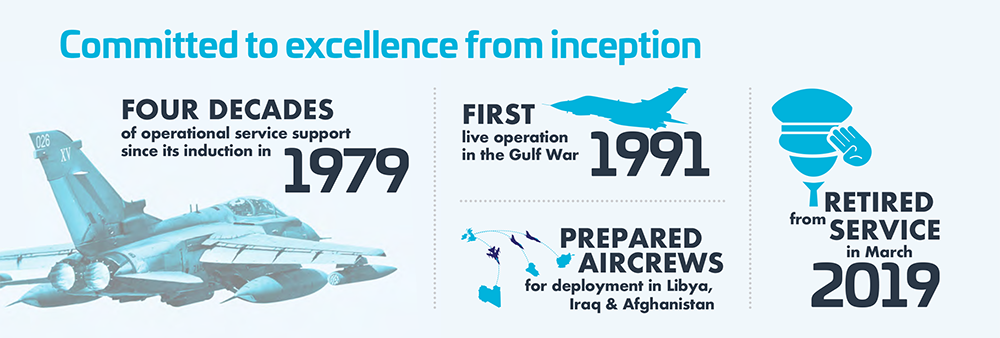
The RAF has used the training and simulation services provided by Thales for the Tornado multi-role combat aircraft from the day it entered service until the day it was finally retired.
Over its four decades of operational service, in which nearly 1,000 aircraft were built (the last one left the factory in 1998), the Tornado has seen action in the Gulf War of 1991, and in Libya, Kosovo, Afghanistan, Iraq and Syria.
The ACE team has provided and managed the buildings, infrastructure, engineers, instructors, administration staff, classroom facilities, desktop training systems and three full flight simulators at RAF bases in Lossiemouth and Marham, clocking up more than 57,000 simulator flying hours in 38,000 simulator sorties.
Other Thales personnel have played a crucial role, too, not least by sacrificing their evenings and weekends to install a total of 75 upgrades to the simulators (in advance of upgrades being installed in the real aircraft) to avoid any interruptions to training. And that’s not all.
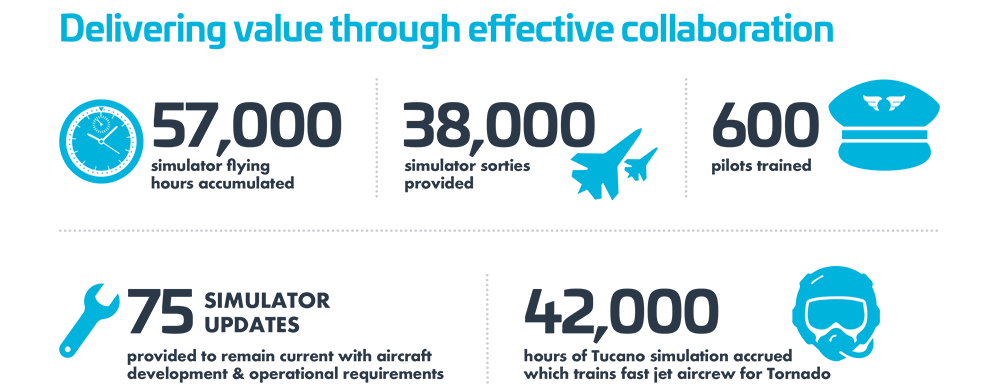
Thales has also provided training on the A400M transport aircraft, the Voyager air-to-air refuelling tanker and the VC10, Tristar, C130, Harrier and Jaguar aircraft, and the Eurofighter Typhoon, and has notched up more than 42,000 hours of simulation for potential fast jet pilots, on the Tucano trainer.
Why old technology can’t keep up
Every fighter pilot has to be trained to deal with extreme G-forces. 9G, which the early 1950s centrifuges used by trainee pilots can achieve, is enough to force blood away from the brain and into the legs, creating tunnel vision and blackouts. This allows the trainee to experience the use of a G-suit and to practise anti-G Straining manoeuvres to diminish the blood-pooling effects of G. But the old-style centrifuges take a leisurely 9 seconds to spin fast enough to deliver 9G. That’s a problem.
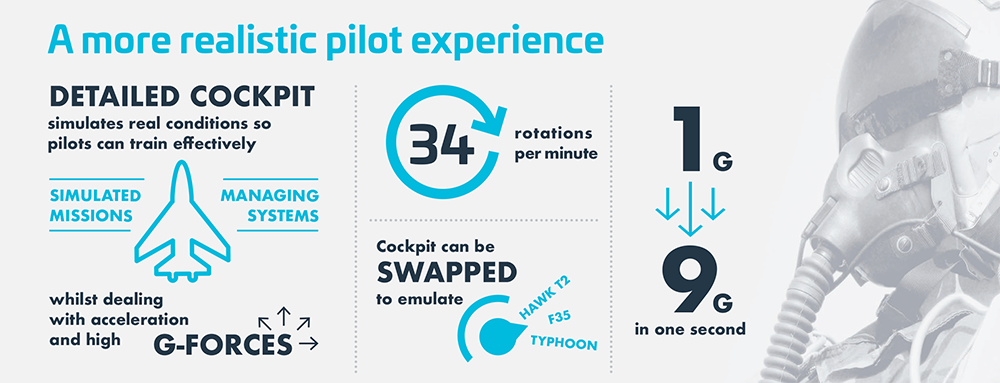
In combat, today’s fast jets can subject a pilot to high-G in an instant, and it is essential that the pilot is ready to deal with this. Thales is meeting this need with an all-new High-G Training and Testing facility, which was recently opened as part of a £44 million project at RAF Cranwell in Lincolnshire. Its centrifuge can accelerate the occupant from 1.6G to 9G in just one second.
Unlike the early centrifuges, in which the trainee was simply strapped in for a ‘ride’, the facility at Cranwell also features a flight simulator, with highly realistic out-of-the-window views, accurate displays and working flight controls which the pilot can operate to ‘fly’ the machine. This lets the pilot experience (and practise mitigating) the extreme physiological effects of performing sudden high-speed manoeuvres, such as the tight turns which are used in dogfights and missile evasion, in complete safety.
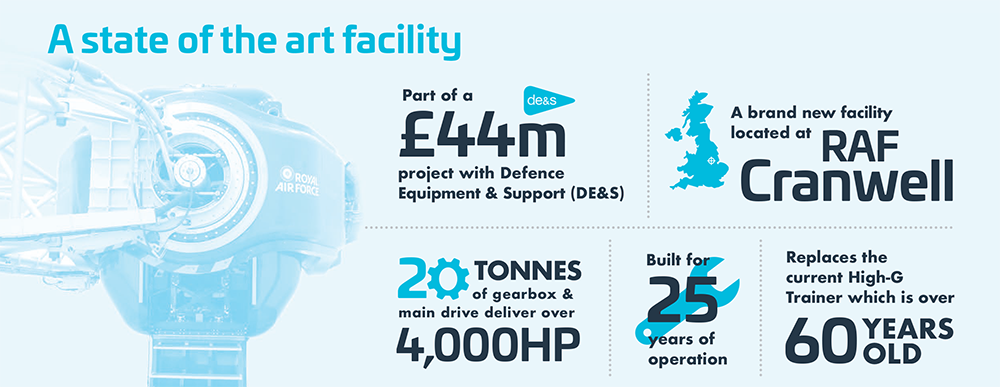
The Cranwell high-G simulator is the only facility of its kind in the UK and one of only three in the whole world.
The simulator can also perform a rapid transition from positive to negative G (down to -3) to replicate one of the most common causes of something called G-LOC (G-induced Loss Of Consciousness), a dangerous condition in which the pilot blacks out. Forces as high as 12G can be also be created, in order to test equipment.
A life-like experience
The ‘brain’ of the simulator is software from industry-leading developer AMST. As well as giving the pilot the ability to create and experience high-G manoeuvres, it is linked to an instructor’s station. This allows the pilot to fly against a virtual opponent in a dogfight, with the enemy aircraft being ‘flown’ by the instructor.
David Bolsover is convinced of the value of advanced high-G training and simulation. “The pilots think its brilliant,” he said.
“You sit in a real cockpit, with real controls, experiencing the G-force created by your own control inputs. What’s more, we can now generate the G-profiles that the doctors have been asking for. This is as real as it gets without actually being in the air.”
The simulator can be equipped and configured to replicate the Hawk T2, the Eurofighter Typhoon and the RAF’s most recent fighter, the F35 Lightning. Changing configurations takes just 30 minutes.
A force for the common good
Thales will continue to develop and enhance its decades-old relationship with the RAF, improving the skills of some of the world’s best pilots for the foreseeable future. But there is an attractive export opportunity, too. The Hawk T2 trainer is in service in 18 countries around the world, the Eurofighter is in seven (soon to be nine) and the USA has sold the F35 to eleven allied air forces. That’s a lot of aircraft in a lot of countries.
High-G training is essential for the modern international air forces on who we all depend to defend our mutual interests. In Cranwell, Thales has created a solution which the UK and our allies can rely on for the best high-G simulation, training and testing capability in the world. Together, we are stronger.
